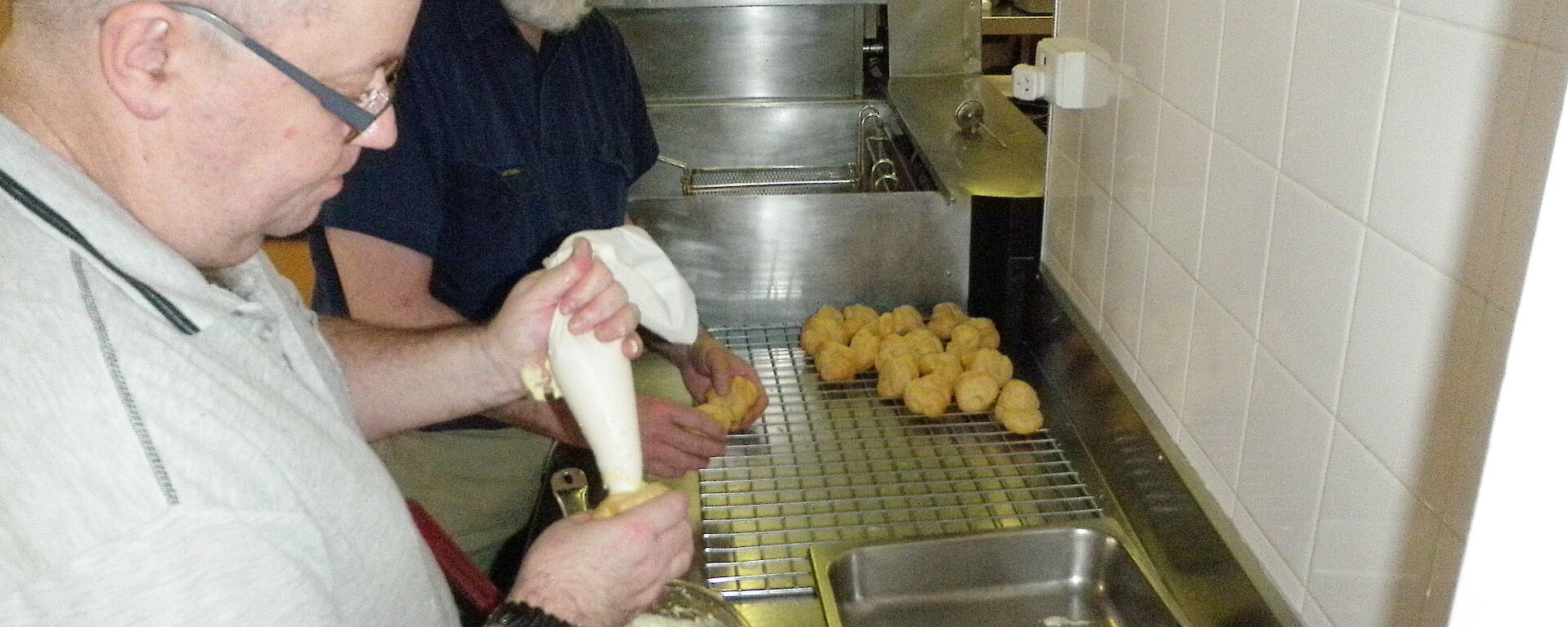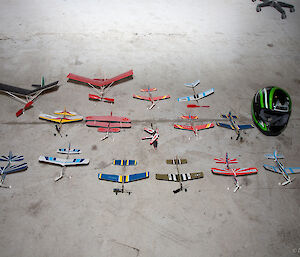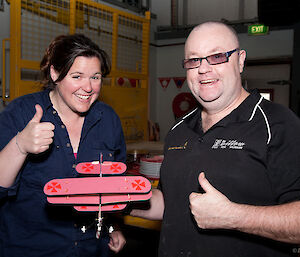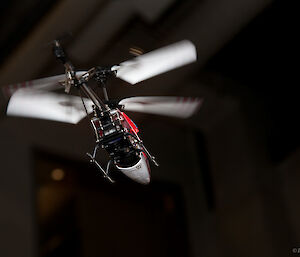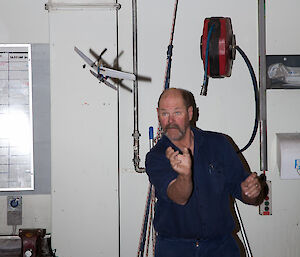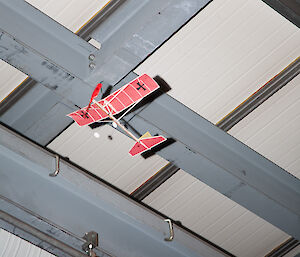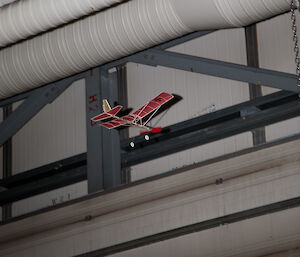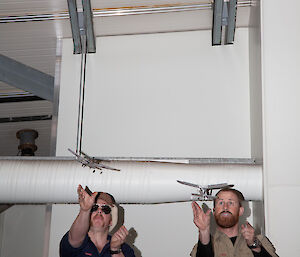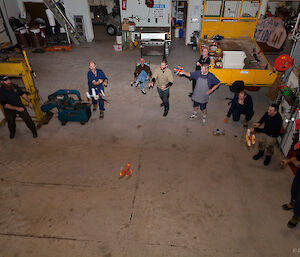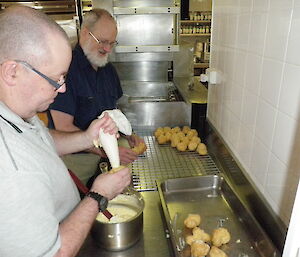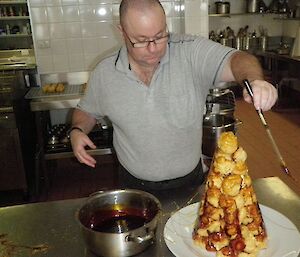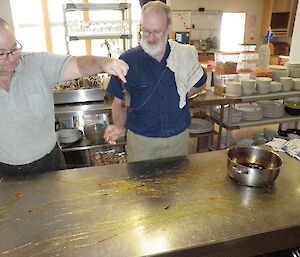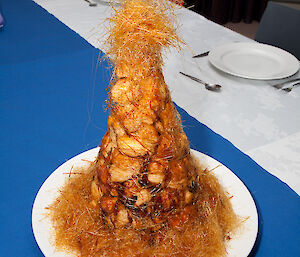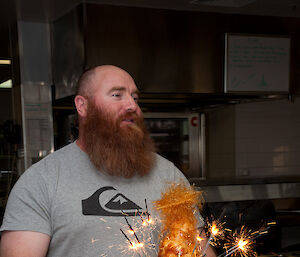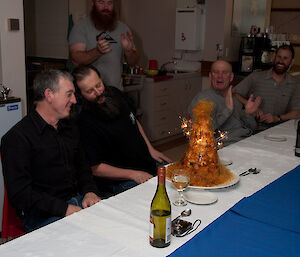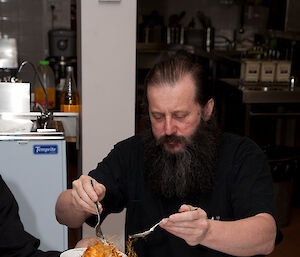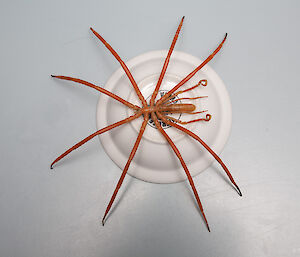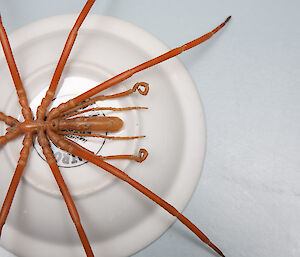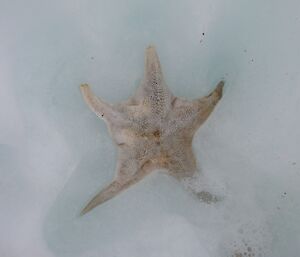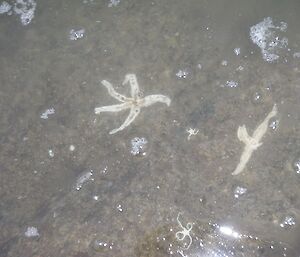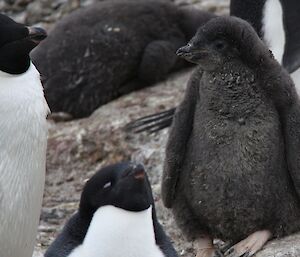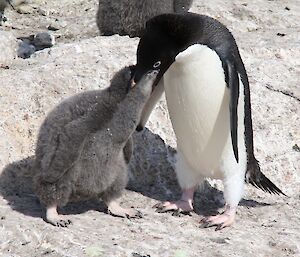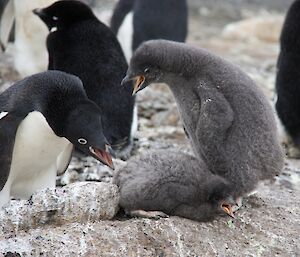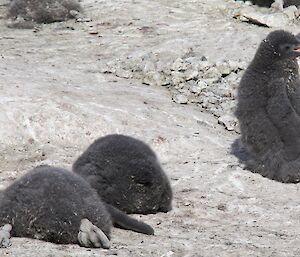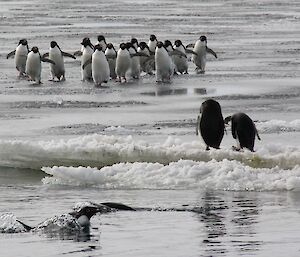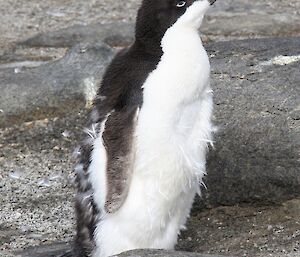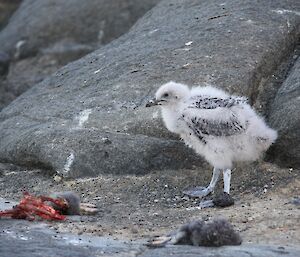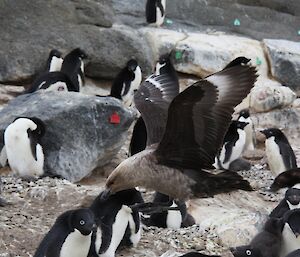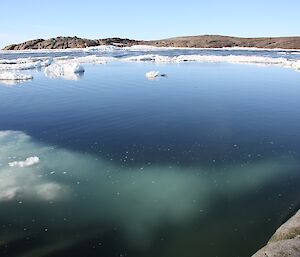The annual Mawson ‘hangar rats’ event was held in the Diesos’ workshop on Friday afternoon. This is one of the premier events on the Mawson calendar each year and, this year, was also considered a good enough reason for ‘Friday Drinks’ followed by a BBQ dinner. BBQs are something the Diesos seem to be good at, though there doesn’t appear to be a corresponding correlation with overheated engines so this is possibly just a fortuitous coincidence.
For those wondering, a ‘hangar rat’ is a balsa wood (or more likely foam plastic now-a-days) model aeroplane with a propeller driven by a rubber band. The ‘pilot’ winds the rubber band up until he/she thinks there is enough energy stored to get the longest flight, gets bored, snaps the rubber band or breaks the aircraft in two. Of course, putting lots of energy into light weight model that is about to be flown inside a large building full of steel girders carries some risk that it will last only the one flight, though the onlookers will certainly enjoy the outcome.
The rules are that the aircraft must be built from a pre-supplied kit on the basis that all will be identical, though there is some scope for adding decorations such as a distinctive colour scheme. In reality, these rules are taken more as guidelines and about the only one followed to any extent is that most began life from the same type of kit, mainly because that is the only way to get started. One entry was deemed ineligible as it was of rotary wing rather than fixed wing design; possibly the fact that it was also powered by an electric motor and radio controlled didn’t help it’s chances of being permitted to compete.
While most entries stuck with the basic form of the kit there were a couple of versions of ‘rats’ from previous years that had survived and were found around station, and a model of the WW-I tri-plane flown by the Red Baron.
Several events were held: longest flight, best turned out, elimination heats of two aircraft competing for the longest flight, and most spectacular crash, landing, or other feat that was considered worthy of notice. Plenty of fun for all involved, and a great BBQ dinner afterwards made the 2011/12 ‘Hangar Rats’ event another success on the annual social calendar.
Ian Phillips

